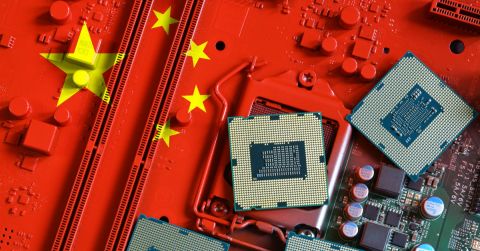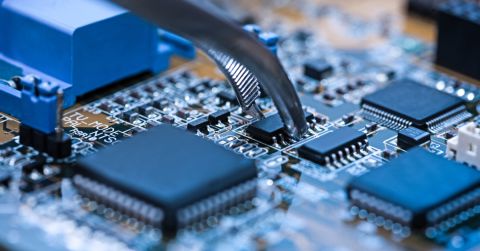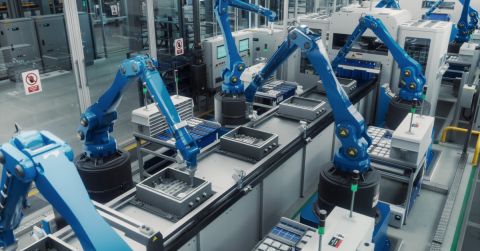Cellular vs. DSRC for V2X Communication: The Debate Continues...

Connected cars will come closer to being reality once the industry can decide which communications protocol will work best for inter-vehicle and infrastructure networking. Wireless protocols have to be used for these connections, with 802.11 and cellular protocols being the primary options for these systems. There is still some debate within the industry as to which protocol will win the day, or whether everything will just go cellular once 5G hits.
So what do designers need to build new systems for each protocol? In a previous article, we looked at some current options for 5G modems in handsets; similar components are available for 3G/4G/4G-LTE to create V2X communication systems. If you’re leaning towards 802.11p, then you need to use a dedicated short-range communication (DSRC) transceiver for wireless communication. There are some reasons to lean towards DSRC in this debate, and some components are already available that will support this protocol.
What is DSRC?
Back in October 1999, the US Federal Communications Commission (FCC) carved out 75 MHz within the 5.9 GHz band for use by intelligent transportation systems (ITS) running on the DSRC protocol. The goal was to provide a dedicated channel for inter-vehicle communication. The EU would later follow suit and allocate 30 MHz in the same band for ITS in 2008. Countries like Japan, Singapore, and European countries have been using DSRC toll collection.
DSRC is a wireless protocol that is a variant of WiFi that runs at the top end of the WiFi 5 range. Specifically, this protocol operates from 5.850 to 5.925 GHz with BPSK, QPSK, 16QAM, or 64QAM modulation using OFDM with CSMA. This protocol follows the specification listed in the IEEE 802.11p standard.
DSRC vs. C-V2X Communication
Compared to DSRC, cellular VX2 (C-V2X) communication provides additional capabilities like direct communication with pedestrians (called V2P), which is a major game-changer. Both protocols can interface with cellular networks for non-safety purposes, making DSRC something of a hybrid system for V2X. On a PCB, the layout techniques used for WiFi can be used with DSRC, making it easy for many designers to quickly get started with these systems.
Different companies have developed chipsets and component sets to support either protocol, and many supporting components will be interchangeable between the two types of systems. For example, an NXP whitepaper claims DSRC should be the dominant protocol thanks to interoperability with 4G LTE. Tasks on DSRC do not require massive data payloads and can benefit from the low latency of WiFi-like protocols. NXP is also supporting V2X over DSRC with telematics modules, automotive PMICs, application processors (MCUs), and RF front-end components.
In contrast, Intel, Qualcomm, and other chipmakers have fallen on the side of C-V2X and are actively working on C-V2X chipsets to support 5G NR and future rollouts. Some in the industry are already declaring DSRC dead in the water as 5G begins coming online, but it is still too early to discount the usefulness of DSRC for short to medium range networking between vehicles and infrastructure. Some earlier studies on the issue suggest V2X communication over 4G LTE should be preferred for non-safety applications like traffic information transmission, file download, or Internet access. For safety applications, such as ADAS or communication with traffic signs, DSRC is preferable.

The Verdict
In my opinion, the NXP whitepaper linked above hits the nail on the head. C-V2X will eventually be dominant (they don’t state this explicitly), but DSRC will continue to be relevant because 5G is still not ready for mass adoption. That being said, major automakers are backing C-V2X; Toyota will no longer include DSRC chipsets in its 2021 model year vehicles, and major partnerships are developing between automakers and chipmakers. In addition, municipalities and OEMs are watching what the FCC will decide as this will determine the future of DSRC.
With much of the auto industry is gravitating towards C-V2X, including Toyota (the world’s largest carmaker) and American OEMs, Volkswagen (the world’s second-largest carmaker) has embraced DSRC in its new vehicles for the time being. Upcoming C-V2X trials at the municipality level are being scheduled (for example, in Gainesville, FL) to test this new paradigm with their infrastructure to assess safety and compatibility.
So which technology will win the day? It partially depends on whether the FCC will carve out any portion of the 5.9 GHz band for C-V2X. The industry’s focus on C-V2X is not lost on the FCC, who will need to decide whether the 20-year old allocation of the 5.9 GHz band will need to shift to C-V2X. The US Department of Transportation has acknowledged that a mix of technologies will be needed in newer vehicles to provide short, medium, and long-range V2X communication.
The automotive industry is destined to become more advanced with the introduction of V2X communication on a broad scale. If you’re designing new systems for V2X communication using the 802.11p protocol, Octopart gives you the search and advanced filtration features you need to find the components for DSRC and C-V2X systems. Take a look at our RF transceivers page to get started on your search for the components you need.
Stay up-to-date with our latest articles by signing up for our newsletter.








